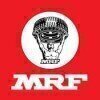

Navayuga Engineering Company




30+ Navayuga Engineering Company Interview Questions and Answers
Q1. After casting...concrete loss it's moisture content in order to maintain moisture content we give water to concrete to gain early strength and also resist creep formation
Water is added to concrete after casting to maintain moisture content and achieve early strength and resist creep formation.
Adding water to concrete after casting helps to prevent excessive moisture loss.
Maintaining moisture content in concrete is important for proper hydration of cement particles.
Watering concrete can also help in reducing shrinkage and cracking.
By providing moisture, the concrete gains strength faster and can resist creep formation.
Examples of methods to ma...read more

Q2. 1. What is the contour 2. What is the SWDTM software regarding survey 3.what is the Auto cad knowledge 4.how many type of traversing in Survey 5.what the knowledge of Curve in survey work and how to calculate m...
read moreInterview questions for Sr. Engineer Survey
Contour is a line connecting points of equal elevation on a map
SWDTM software is used for survey data management
AutoCAD knowledge is essential for creating and editing survey drawings
There are two types of traversing in survey: open and closed
Curve knowledge is important for designing roads, railways, and pipelines
Traversing error can be calculated by comparing the measured and calculated values
Excavation and filling quantities can b...read more

Q3. What isM20,What are the types of steel,Harbour topics etc
M20 is a grade of concrete used in construction. Steel types include mild steel, high tensile steel, and stainless steel. Harbour topics may include dredging, breakwaters, and port design.
M20 is a mix of concrete with a compressive strength of 20 MPa
Mild steel is commonly used in construction for reinforcement
High tensile steel has a higher strength and is used in structures with greater stress
Stainless steel is corrosion-resistant and used in environments with high moisture ...read more

Q4. In bleeding water comes out from concrete and in segregation aggregate separates from concrete
Bleeding and segregation are common issues in concrete construction.
Bleeding occurs when excess water in the concrete mixture rises to the surface, leaving behind a layer of water.
Segregation happens when the coarse aggregates separate from the rest of the concrete mixture.
Both bleeding and segregation can negatively impact the strength and durability of the concrete.
Proper mix design, adequate compaction, and appropriate curing techniques can help minimize these issues.

Q5. Name Residence Qualification hobbies experience etc
Residence: New York, Qualification: Bachelor's degree in Civil Engineering, Hobbies: Reading, Experience: 5 years in planning and scheduling
Residence: New York
Qualification: Bachelor's degree in Civil Engineering
Hobbies: Reading
Experience: 5 years in planning and scheduling

Q6. Why do we need curing for concrete
Curing is necessary for concrete to ensure proper hydration and strength development.
Curing prevents moisture loss from the concrete, allowing it to maintain its desired water-cement ratio.
It helps in reducing shrinkage and cracking by providing a controlled environment for the concrete to cure.
Curing promotes the formation of calcium silicate hydrate (CSH) gel, which contributes to the strength and durability of concrete.
Proper curing enhances the long-term performance of co...read more

Q7. Allowable Height for Free fall for concrete
The allowable height for free fall for concrete depends on several factors.
The allowable height for free fall for concrete is typically specified by the project specifications or industry standards.
The height is influenced by factors such as the type of concrete mix, slump value, and the presence of reinforcing steel.
For example, for normal weight concrete with a slump of 3 to 4 inches and no reinforcing steel, the allowable free fall height may be around 5 feet.
However, for ...read more

Q8. What should be the necessary document for Bill?, how do you justify that fiber shotcrete is okay or not ? What should be safest distance for Tunnel face blast?, what is powder factor?
The necessary document for Bill is a detailed invoice. Fiber shotcrete can be justified through testing and analysis. The safest distance for Tunnel face blast depends on various factors. Powder factor is a measure of explosive efficiency.
The necessary document for Bill is a detailed invoice that includes all the relevant information such as the scope of work, quantities, rates, and any additional charges.
To justify the use of fiber shotcrete, it is important to conduct tests...read more


Q9. schedule H drugs that shall be sold by retailer on of the RMP, Eg - Amikacin sulphate, Antibitics, etc
Schedule H drugs can only be sold by retailers on the prescription of a registered medical practitioner.
Schedule H drugs are drugs that have a higher potential for abuse and addiction.
These drugs can only be sold by retailers on the prescription of a registered medical practitioner.
Examples of Schedule H drugs include Amikacin sulphate, Antibiotics, etc.

Q10. Types of steel & design codes of construction materials,
Various types of steel and design codes are used in construction materials.
Common types of steel include carbon steel, stainless steel, and alloy steel.
Design codes for construction materials include ACI, AISC, ASCE, and ASTM.
ACI (American Concrete Institute) provides codes for concrete design.
AISC (American Institute of Steel Construction) provides codes for steel design.
ASCE (American Society of Civil Engineers) provides codes for various civil engineering projects.
ASTM (Am...read more

Q11. In M20 what does M stands for
M stands for 'Mix' in M20.
M20 is a designation for a concrete mix with a compressive strength of 20 megapascals (MPa).
The 'M' in M20 represents the word 'Mix', indicating that it is a mix of cement, sand, and aggregate.
The number following 'M' in M20 denotes the compressive strength of the concrete mix.
Different grades of concrete have different compressive strength requirements, and the 'M' designation helps in identifying the mix ratio.

Q12. Difference between segregation and bleeding
Segregation is the separation of coarse and fine particles in concrete mix, while bleeding is the upward movement of water in fresh concrete.
Segregation occurs when the coarse aggregates settle down due to gravity, resulting in a non-uniform distribution of particles in the mix.
Bleeding happens when excess water in the concrete mix rises to the surface, leaving behind a layer of water on top.
Segregation can lead to a decrease in concrete strength and durability, as well as an...read more

Q13. What is opm? If moisture content 20 in soil what will happen
OPM stands for Optimum Moisture Content. If moisture content in soil is 20%, it will be at its ideal level for compaction.
OPM is the moisture content at which soil is most workable and compactable.
At 20% moisture content, soil will be at its optimum level for compaction.
Higher or lower moisture content can lead to poor compaction and stability issues.

Q14. tell me about H schedule drug
Schedule H drugs are prescription medications that have a high potential for abuse and are strictly regulated.
Schedule H drugs are classified as prescription-only medications.
They have a high potential for abuse and addiction.
These drugs are subject to strict regulations and can only be dispensed by a licensed pharmacist.
Examples of Schedule H drugs include opioids like oxycodone and hydrocodone, as well as sedatives like diazepam and alprazolam.

Q15. What is the procedure for PSC girders cating?
The procedure for PSC girders casting involves preparing formwork, placing reinforcement, pouring concrete, curing, and demolding.
Prepare formwork according to design specifications
Place reinforcement bars as per structural drawings
Pour concrete mix into the formwork
Ensure proper vibration to remove air bubbles
Cure the concrete for specified duration
Demold the PSC girder after sufficient strength is achieved

Q16. Steps involved in concreting
The steps involved in concreting include site preparation, formwork, reinforcement, mixing, pouring, leveling, finishing, and curing.
Site preparation involves clearing the area and ensuring proper drainage.
Formwork is constructed to shape and support the concrete.
Reinforcement is placed to provide strength to the concrete structure.
Concrete ingredients are mixed in the correct proportions.
The mixed concrete is poured into the formwork.
The concrete is leveled and compacted to ...read more

Q17. Define urself, how do you tackle problems
I am a determined and resourceful individual who tackles problems by breaking them down into smaller tasks and finding creative solutions.
I approach problems with a positive attitude and a willingness to learn from challenges.
I prioritize tasks based on urgency and importance to effectively manage my time.
I seek input from others and collaborate to brainstorm solutions.
I am not afraid to take risks and try new approaches to problem-solving.
For example, when faced with a diffi...read more

Q18. From which college u have passed ur engineering
I passed my engineering from XYZ College.
I graduated from XYZ College with a degree in engineering.
I completed my engineering studies at XYZ College.
I am a proud alumni of XYZ College's engineering program.

Q19. What is the procedure for piling?
Piling is a procedure used in construction to create a deep foundation by driving or drilling piles into the ground.
Piling is used to transfer the load of a structure to deeper, more stable soil or rock layers.
The procedure for piling involves several steps such as site investigation, pile design, installation, and testing.
Site investigation includes soil testing to determine the type and properties of the soil.
Pile design involves determining the type, length, and diameter o...read more

Q20. what is big next megha project sites?

Q21. How to handle of a projects
Handling projects requires effective planning, communication, and management skills.
Create a detailed project plan with clear timelines and milestones
Communicate regularly with team members and stakeholders to ensure everyone is on the same page
Identify and mitigate potential risks and issues before they become major problems
Monitor progress and adjust plans as needed
Ensure all project deliverables meet quality standards and are delivered on time and within budget

Q22. What is the Piling
Piling is a construction technique used to strengthen the foundation of a structure by driving piles into the ground.
Piling is a method of deep foundation used to transfer the load of a structure to deeper, more stable soil or rock layers.
Piles are long, slender columns made of materials like concrete, steel, or timber.
They are driven into the ground using specialized equipment such as pile drivers or hydraulic hammers.
Piling is commonly used in the construction of bridges, h...read more

Q23. What is psc girders
PSC girders are pre-stressed concrete girders used in construction projects.
PSC stands for Pre-Stressed Concrete.
PSC girders are structural elements used to support loads in bridges, buildings, and other infrastructure projects.
They are made by placing high-strength steel strands or bars under tension before pouring concrete around them.
The pre-stressing of the steel helps to counteract the tensile forces that the girder may experience during use.
PSC girders offer higher stre...read more

Q24. You have heavy license
Yes, I have a heavy license.
I have a valid heavy license for operating crawler cranes.
I have undergone the necessary training and certification to obtain the heavy license.
Having a heavy license demonstrates my competence and knowledge in operating heavy machinery.
With a heavy license, I am authorized to operate crawler cranes safely and efficiently.

Q25. Whate is megar?
Megger is a portable instrument used to measure the insulation resistance of electrical equipment.
Megger is used to test the insulation resistance of wires, cables, transformers, and electrical motors.
It helps in identifying any insulation breakdown or faults in the equipment.
The instrument applies a high voltage to the equipment and measures the resistance to current flow.
Megger readings are typically measured in megaohms (MΩ).

Q26. What is multimeter?
A multimeter is a versatile tool used to measure voltage, current, and resistance in electrical circuits.
A multimeter typically has a digital display to show the measured values
It can measure AC and DC voltage, current, resistance, and sometimes other parameters like capacitance and frequency
Multimeters have different settings for different types of measurements, such as voltage, current, and resistance
They often have probes or leads that are connected to the circuit being te...read more

Q27. How to manage site?
Managing a site involves coordinating resources, ensuring safety, monitoring progress, and communicating effectively.
Coordinate with project team and subcontractors
Ensure compliance with safety regulations
Monitor progress and adjust schedule as needed
Communicate effectively with stakeholders
Maintain accurate records and documentation

Q28. Define urself in three words
Passionate, driven, and adaptable individual with a strong work ethic and a desire to learn and grow.
Passionate - I am deeply passionate about my work and always strive to give my best.
Driven - I am highly motivated and focused on achieving my goals.
Adaptable - I am able to quickly adjust to new situations and challenges.
Strong work ethic - I believe in hard work and dedication to achieve success.
Desire to learn and grow - I am always seeking opportunities to expand my knowle...read more

Q29. What is cpm and pert
CPM (Critical Path Method) and PERT (Program Evaluation and Review Technique) are project management tools used to plan and schedule tasks.
CPM is a deterministic model that calculates the longest path through a project's tasks to determine the minimum project duration.
PERT is a probabilistic model that uses three time estimates (optimistic, pessimistic, and most likely) to calculate the expected project duration.
Both CPM and PERT help in identifying the critical path, which i...read more

Q30. What is concrete temperature
Concrete temperature refers to the temperature of freshly mixed concrete before it sets.
Concrete temperature affects the setting time and strength development of concrete.
It is important to monitor and control the temperature of concrete during mixing, transportation, and placement.
The ideal temperature range for concrete is typically between 50-75 degrees Fahrenheit.
Extreme temperatures can lead to issues such as thermal cracking or reduced strength.
Concrete temperature can ...read more

Q31. Density of stee, wood, cement
Density of steel, wood, and cement varies due to their composition and structure.
Steel has a density of around 7850 kg/m^3
Wood has a density ranging from 400-800 kg/m^3 depending on the type of wood
Cement typically has a density of 1440 kg/m^3





Top HR Questions asked in Navayuga Engineering Company
Interview Process at Navayuga Engineering Company

Top Interview Questions from Similar Companies









Reviews
Interviews
Salaries
Users/Month












